What's In for Spring at the Golden Horseshoe
- Details
- Written by Joanne Wallenstein
- Category: The Goods
 Now that a few daffodils have emerged, it looks like there might be spring after all. Warmer weather means a change in wardrobe and to find out what's in for spring we took a stroll around the Golden Horseshoe to see what's in store for the whole family.
Now that a few daffodils have emerged, it looks like there might be spring after all. Warmer weather means a change in wardrobe and to find out what's in for spring we took a stroll around the Golden Horseshoe to see what's in store for the whole family.
We began at Beginnings where we learned that distressed denim and relaxed, slouchy boyfriend jeans are de rigueur. Color is back too – check out these bright silk blouses that can be worn with long, layered necklaces and something fringed to complete your "bohemian look" that's fashion forward this year.
Next door, Cheryl's Closet caters to the over-50 market with fashion to make any silver fox look young. There are white jeans that fit the mature figure by "Piece of Cloth" to be worn with colorful t-shirts and summer sandals. They've got a little black dress for any occasion and custom knit sweaters that can be made in all sizes and colors. They also carry and discount great handbags from MZ Wallace. For Mother's Day order a custom necklace with  mom's initials.
mom's initials.
Infiniti is greeting spring with a camp party, this Sunday from 11-5. There will be photos, raffle prizes and even s'mores to set the tone for camp this summer. The store is stocked with loads of fun camp gear and clothing for tweens include P.J. Salvage Pajamas, I Love Camp beaded bracelets, psychedelic towels, laundry bags shirts and sweatshirts – and almost everything can be personalized with your camp name. Join the camp party on Sunday April 19th from 11 am – 5 pm at Infiniti in the Golden Horseshoe.
Neil's is primed for spring and summer with loads of merchandise in bright colors featuring emoticons, team logos and patterns. For boys and big boys there are Nike Elite shorts and socks, t-shirts and sweatshirts displaying college and team names and board shorts in stripes and plaid. Girls will love the fuzzy PJ pants and short shorts, along with Soffe and distressed denim shorts. Pair those with a t-shirt with an emoticon and Nike flip-flops and you'll be ready for the pool or summer camp. Phyllis, who has run the shop for over a decade, says fashion this year is back to Woodstock with fringes, sherbet colors and frayed jeans. Special offer – buy over $250 in merchandise and they'll sew on nametags for free.
and frayed jeans. Special offer – buy over $250 in merchandise and they'll sew on nametags for free.


![]()
Chancellor Merryl Tisch to Visit Scarsdale
- Details
- Written by Joanne Wallenstein
- Category: The Goods
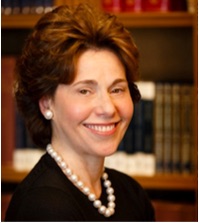 The Chancellor of the NYS Board of Regents, Merryl Tisch, is coming to Scarsdale on Thursday April 30 at 7:30 pm to discuss the "Common Core and High Performers" with Scarsdale Superintendent Thomas Hagerman and NYS Assemblywoman Amy Paulin. The session has been organized by the Scarsdale Forum and will be held in the Scott Room of Scarsdale Library. Questions from the audience are encouraged.
The Chancellor of the NYS Board of Regents, Merryl Tisch, is coming to Scarsdale on Thursday April 30 at 7:30 pm to discuss the "Common Core and High Performers" with Scarsdale Superintendent Thomas Hagerman and NYS Assemblywoman Amy Paulin. The session has been organized by the Scarsdale Forum and will be held in the Scott Room of Scarsdale Library. Questions from the audience are encouraged.
Here's your chance to air your views on state testing and teacher evaluations and get answers to your questions.
Merryl H. Tisch New York State Board of Regents
Chancellor Merryl H. Tisch was appointed to the New York State Board of Regents on April 1, 1996 and has served continuously since. She was elected Chancellor by her colleagues effective April 1, 2009.
She is chairperson of the Metropolitan Council on Jewish Poverty and serves on the executive committees of The Washington Institute for Near East Policy and the Citizens Budget Commission. Additionally, she serves on the board of The Trust for Cultural Resources of the City of New York, the Graduate School of Education's Board of Overseers at the University of Pennsylvania and Sesame Workshop.
 Dr. Thomas Hagerman Superintendent of Scarsdale Schools
Dr. Thomas Hagerman Superintendent of Scarsdale Schools
Dr. Thomas Hagerman joined the Scarsdale Public Schools as its new Superintendent of Schools on July 1, 2014. Previously, he served as superintendent of the nationally renowned Winnetka School District 36 on Chicago's north shore. Dr. Hagerman has served as superintendent in both K-8 and K-12 high-performing school districts in communities similar to Scarsdale -- those with high expectations and exemplary achievement.
He obtained a bachelor's degree in English and a master's degree in Education from Lewis and Clark College, and a doctoral degree in Policy, Organization and Management from the University of Oregon.
Amy Paulin New York State Assemblywoman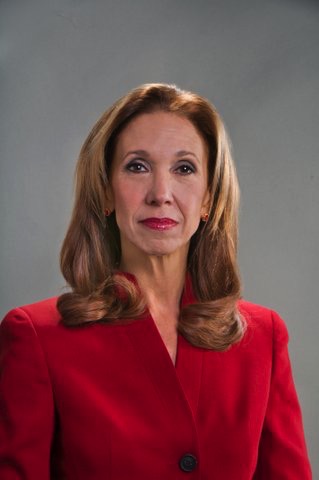
Assemblywoman Amy Paulin has served the 88th New York State Assembly District (Scarsdale, Eastchester, Tuckahoe, Bronxville, Pelham, Pelham Manor, and parts of New Rochelle and White Plains) since 2001. She chairs the Assembly Committee on Energy, serves on the Committees on Education, Higher Education, and Health, and has a long, distinguished record of activism in public policy and community issues.
The Assemblywoman was born and raised in Brooklyn, New York. She is a graduate of the State University of New York at Albany and holds a Master's degree and has completed doctoral course work in Criminal Justice from SUNY-Albany.
For program and membership information, please call: 723-2829, e-mail: office@scarsdaleforum.com or visit www.ScarsdaleForum.com.
Senior Cut Day: Is There a Better Way to Celebrate?
- Details
- Written by Isabel Klein
- Category: The Goods
 For the past four years, high school seniors have stumbled into class at 8:05 AM, ready to learn whether they wanted to or not. On the morning of March 17, many seniors decided that they did not want to learn, and never did show up to class. It was senior cut day -- a rich tradition that usually falls on St. Patrick's Day when many seniors choose not to attend school.
For the past four years, high school seniors have stumbled into class at 8:05 AM, ready to learn whether they wanted to or not. On the morning of March 17, many seniors decided that they did not want to learn, and never did show up to class. It was senior cut day -- a rich tradition that usually falls on St. Patrick's Day when many seniors choose not to attend school.
Plans for the day vary. However, the most common activity is going to the St. Patrick's Day parade. Every year on St. Patrick's Day, seniors get dressed up in green and join the usual morning commuters at the Scarsdale train station.
Given the parade's reputation as being the epicenter of drunks and chaos, many parents, teachers, and administrators were concerned about students' safety. Scarsdale High School Principal Kenneth Bonamo sent out an email prior to the cut day in which he explained that the school doesn't condone the cutting. He encouraged students to steer away from the parade and wrote, "There is a widespread perception that St. Patrick's Day is 'senior cut day' and that seniors are excused from their academic and extra-curricular obligations. That is not the case ... We are concerned about the opportunity to engage in risky behavior, most notably underage drinking, that the parade presents."
In his email, Bonamo echoed many parents' concerns. However, the effect on student's choices may not have been as strong as he desired. "He was just doing his job. I don't think it changed anyone's mind or affected anyone's decision," shared senior Brian Leff.
Perhaps more potent than Bonamo's email in deterring students from cutting, however, were threats from teachers. Some teachers were more accepting towards cutting than others. Tough teachers chose to give heavily weighted quizzes on senior cut day. Students who decided to stay in school in order to take those quizzes were often disappointed to find the quizzes made up of basic questions like: "Write your name on the line" or "What book are we reading in class right now?" "The teachers shouldn't get offended and give 400 point tests on the day. It has nothing to do with respect -- it's just a tradition," expressed an anonymous senior. Many teachers refused to comment on senior cut day because they are not supposed to acknowledge its existence.
The consensus about the actual experience at the parade is exactly what most would expect: it was fun for the students to be with their friends, but the parade itself was overhyped. Drinking was definitely a component of the day for most who went to the parade. For many, alcohol consumption started at someone's house at around 9 AM. Drinking was a common theme among the senior class on senior cut day -- even for some of those who attended school.
The disciplinary measures that followed cutting were all part of the fun. Detentions were assigned -- so many, in fact, that dozens of seniors were taken to the large Little Theater in order to reflect on their wrongdoing on March 25. For many of the students present, it was their first and last detention. The energy during detention was lively, and it did not seem like many seniors regretted their cutting of classes.
The administration is so against cut day because they immediately associate the tradition with underage drinking. No one is denying that such activities do occur. Yet, not everyone went to the parade on cut day or even cut school at all. However, here's a thought: why can't senior cut day be a senior celebration day sanctioned by the school?
Bonamo should pick a day in April, when the weather is too beautiful to be sitting inside the classrooms, and organize a senior field day, picnic, or movie night. It may be true that high school students roll their eyes at school-organized events. Yet, an important concept to consider is that many students go to the parade not necessarily to pay respects to good ole St. Patrick. They instead go because everyone else is going, and it is fun to be in one place with a majority of the grade. It would likewise be fun to do anything (well, almost anything – no more SATs, please) as long as everyone is together. Of course there is prom and graduation, but a sort of "sanctioned cut day" can be special.
Seniors have less than fifty days left of high school. Given, cutting school should never be condoned, but teachers and administrators can approach the day and turn the tradition into a positive celebration, which everyone can safely enjoy. Classroom lectures are important, but in the last days of high school, spending time with those fellow classmates with whom one has trekked through the dark, awkward days of adolescence is perhaps more important. Seniors are almost there. They should finish together -- and the administration should be there with them.
Photos and quotes live from Senior Cut Day detention on 3/25: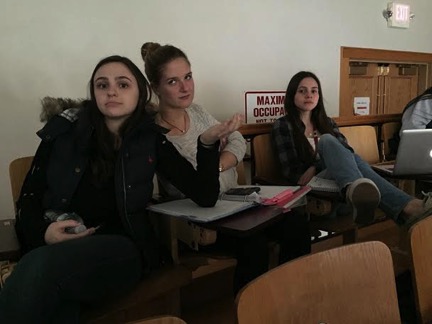
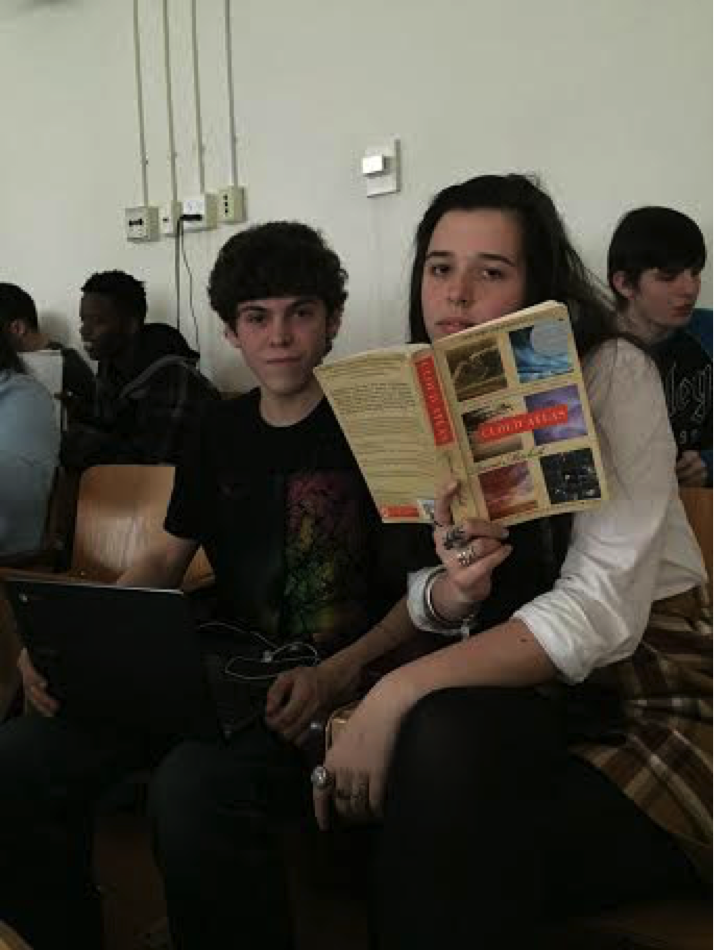
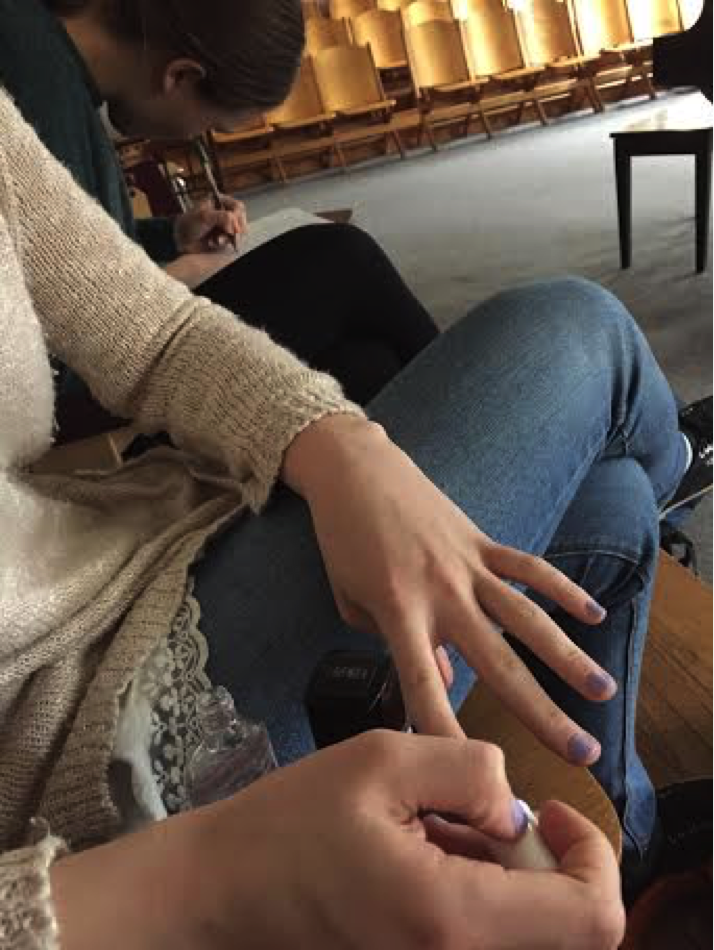
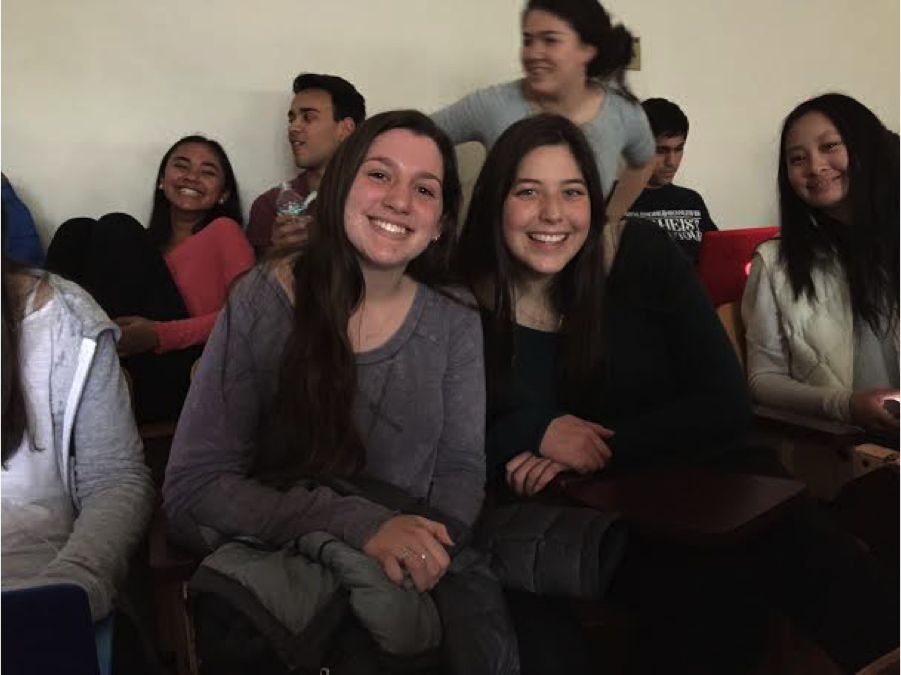
Will Your Children Take the State Tests?
- Details
- Written by Joanne Wallenstein
- Category: The Goods
 The NYS Department of Education is putting Scarsdale School administrators and Scarsdale parents between a "rock and a hard place," according to Scarsdale Middle School Principal Michael McDermott. Though he has been vocal about the flaws in the state testing system for years, his position as Principal prevents him from recommending that students boycott the state tests. To those who think the school district is not doing enough to fight Albany, McDermott says, "Its not that we have been silent – we have taken a leadership position with the powers that be to point out the flaws in the system and the negative impact it has had on the students in the district." However he cautions, "I have first amendment rights to express my views but there is a fine line between individual rights vs. my responsibilities as a district administrator."
The NYS Department of Education is putting Scarsdale School administrators and Scarsdale parents between a "rock and a hard place," according to Scarsdale Middle School Principal Michael McDermott. Though he has been vocal about the flaws in the state testing system for years, his position as Principal prevents him from recommending that students boycott the state tests. To those who think the school district is not doing enough to fight Albany, McDermott says, "Its not that we have been silent – we have taken a leadership position with the powers that be to point out the flaws in the system and the negative impact it has had on the students in the district." However he cautions, "I have first amendment rights to express my views but there is a fine line between individual rights vs. my responsibilities as a district administrator."
School Superintendent Thomas Hagerman and Principal McDermott along with other administrators from NYC and Westchester schools recently had a 2.5 hour meeting with NYS Deputy Secretary for Education Elana Sigall to address real concerns about APPR, test scores and assessments. We asked McDermott why the state does not permit high-performing districts like Scarsdale from opting out of the testing and he said, "It's very frustrating. The NYS Regents can't differentiate who is successful and who is not so we all get treated the same way. Though representatives from school districts from all over the world come to Scarsdale to observe best practices, we can't get anyone to drive two hours south from Albany to see what is going on here."
On March 30th, parents with children in grades 3 – 8 in Scarsdale received an email from the Assistant Superintendent for Instruction Lynne Shain. Shown below it instructs parents who wish to have their children recused from state testing to send refusal letters to their school principals by April 2. However, the email warns, that there could be consequences for the school district if 95% of students do not take the tests.
After three years of failure to meet the 95% quota, Shain says Scarsdale would be "deemed a district in 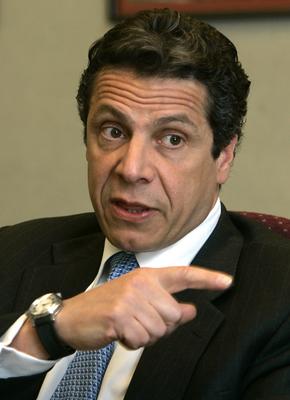 need of assistance and would have to develop, submit and comply with a Local Assistance Plan (LAP), until we reach and maintain a 95% participation rate, with onerous reporting requirements, that would have a cost in time and staff support."
need of assistance and would have to develop, submit and comply with a Local Assistance Plan (LAP), until we reach and maintain a 95% participation rate, with onerous reporting requirements, that would have a cost in time and staff support."
Governor Cuomo's education plan is meeting opposition from all over the state. According to School Principal Carol Burris and Bianca Tanis, a special education teacher and founder of NYS Allies for Public Education, "New York is on the leading edge of a growing national Opt Out movement—a movement that galvanizes the energy of parents, teachers and administrators who are pushing back against the Common Core tests and standardized test-based reforms. Support for such practices has plummeted, with Governor Andrew Cuomo's education reforms dragging his approval ratings down to their lowest level ever. By more than a 2 to 1 margin, New Yorkers trust the teachers union more than the governor, and less than 30 percent want test scores to determine teacher pay and tenure.
Last year the parents of approximately 60,000 New York students in Grades 3-8 refused to have their children take the English Language Arts and mathematics exams. This year, the New York State Allies for Public Education, a coalition of pro-public school, anti-testing advocates, are sponsoring more than 40 forums across the state, and parents are coming out in droves to express their dislike of Common Core test-based reform. One forum on Long Island, featuring Diane Ravitch, had nearly 1,500 attendees. Other forums have drawn hundreds of parents and teachers who applaud Opt Out as the strategy to stop the attacks on public schools and teachers."
We asked a few local parents for their view on the upcoming state tests and whether or not their children would participate. Here are a few comments:
Quaker Ridge Parent: My children in 5th grade at Quaker Ridge will be refusing the state tests, as they did last year. In my opinion, the tests, as they are currently written, are not authentic assessments, as they do not provide any diagnostic information about the student. I object to both the content and duration of the tests. I also do not believe that teachers should be judged by the scores their students receive on these tests. I am glad that our district allows children to refuse via letter, as it would be absurd to require a child as young as 8 years old to personally refuse in front of classmates. Children who refuse are counted as "not tested." They do not receive a zero. Consequences to the district from a less than 95% participation rate would only happen after three years in a row of less than 95% participation. The consequence would be a requirement to implement a Local Assistance Plan to boost participation. Big deal. I would argue that the amount of time and money spent on a LAP would be less than the amount of time and money spent on administering flawed tests.
Another Mom says, "I have kids in grades 5 and 8. We are opting out of the State tests for two main reasons: 1) my understanding is that the State tests do not yield timely, actionable results that would help my children in any way and 2) I don't think it's a good use of their time - this won't prepare them for life and doesn't "teach" test taking - we will prepare them for that in other ways (i.e SAT prep, etc). "
Greenacres Mom: So I guess I have a minority view. I have no problem with my kids taking these tests because life is full of tests and forgetting the test itself, I think as much practice as they can get sitting for tests, feeling that stress and working it through will only help them later in life. So for me, it's not about the content, but the actual experience.
Here is the email from Lynne Shain
Dear Parents of Students in Grades 3-8,
Since my March 19 letter to you about Grades 3-8 testing, we've been working with the State on a daily basis to get clarification on testing regulations. We've received vague and often contradictory responses. Recently, we learned that it is now a district decision as to whether to accept parent refusal letters, and we have decided to accept them. To expedite the process, parents sending refusal letters are asked to do so by April 13, but preferably by April 2 before spring vacation, through an email to the principal, the receipt of which can be quickly acknowledged. If a principal receives parent refusal letters by April 13, we will not put a test in front of the children involved during the testing or make-up days. During testing days, students will stay in their testing room and may read. On make-up days, students will not have to report to the make-up room and will follow their regular class schedule.
Please understand that the NYS Department of Education requires all schools to have a 95% participation rate in State testing. We've been told if we do not comply there is not only an adverse effect on teacher, school, and district scores, but that there is an additional penalty to the district. In Scarsdale's case, as best as we can determine, there would not be any negative impact on State aid. However, if we do not have 95% of our students take the State tests for three years in a row, we would be deemed a district in need of assistance and would have to develop, submit and comply with a Local Assistance Plan (LAP), until we reach and maintain a 95% participation rate, with onerous reporting requirements, that would have a cost in time and staff support.
I have included below the citations that were sent to us in the past week from the NYSED. If further clarification is needed, please feel free to contact me.
Lynne Shain
Assistant Superintendent for Instruction
Reference Information Regarding Testing and Student Participation
Common Core English Language Arts and Mathematics Tests School Administrator's Manual Page 9: All students are expected to participate in State tests as part of the core academic program. Absences from all or part of the required academic program should be managed in accordance with the attendance policies of the district. For accountability and other statewide reporting purposes, students who do not participate in an assessment are reported to the State as not tested. Schools do not have any obligation to provide an alternative location or activities for individual students while the tests are being administered."
Student Information Repository System (SIRS) Manual: Students who refuse to take the entire test must be reported at the local level with a final score of "999" and a standard achieved code of 96, indicating refusal. These records do not move to Level 2 of the Student Information Repository System. These students will be considered to have "no valid test score" and will be counted as not tested. Students who indicate refusal however, answer at least one question on the test, will receive a scale score and performance level based on the questions answered."
Steven Katz's memo re: Information on Student Participation in State Assessments
"With the exception of certain areas in which parental consent is required, such as Committee on Special Education (CSE) evaluations for students with disabilities and certain federally-funded surveys and analyses specified under the federal Protection of Pupil Rights Amendment (see 20 U.S.C. 1232h), there is no provision in statute or regulation allowing parents to opt their children out of State tests. The failure to comply with the requirements provided above will have a negative impact on a school or school district's accountability, as all schools are required to have a 95% participation rate.
On Mar 20, 2015 Ira Schwartz, Assistant Commissioner, wrote: There are multiple negative consequences for not meeting the required 95% participation rate requirement:
(1) Schools in which subgroups do not meet the participation rate will fail to make Adequate Yearly Progress (AYP).
(2) SED will continue to determine and report AYP every year. A school that has not been designated as Focus or Priority and fails to make AYP for the same subgroup for the same measure for 3 successive years would be identified this year as a Local Assistance Plan (LAP) school. LAP schools would have their accountability status changed from Good Standing to LAP for this school year. LAP schools, in collaboration with the school district, will be required to annually use a diagnostic tool to develop a local assistance plan.
(3) Schools failing to make AYP cannot come off Priority and Focus Status.
(4) Schools failing to make AYP cannot become Reward Schools, and would be ineligible for the funding that comes with such a designation.
(5) Schools that persistently fail to meet participation rates may be subject to participation rate audits and may be required to develop plans to improve participation rates.
Read more about this issue here: What do you think? Will your children be taking the tests? Enter your thoughts in the comments section below.
Board Reviews Proposed 2015-16 Budget: School Taxes to Go Up 2.58%
- Details
- Written by Melissa Hellman
- Category: The Goods
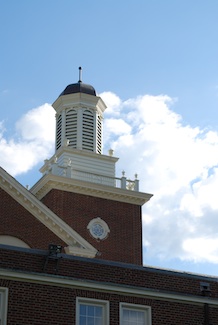 The Board of Education formally presented the preliminary 2015-2016 budget to the community at a meeting on March 18. Overall, there was not a lot of change from what was originally presented and has been reported about on this site on February 5, February 15, March 3 and March 12.
The Board of Education formally presented the preliminary 2015-2016 budget to the community at a meeting on March 18. Overall, there was not a lot of change from what was originally presented and has been reported about on this site on February 5, February 15, March 3 and March 12.
This point in the budget development marks management transition of the process to the Board Members from the district's administrative leadership. The Board itself is no longer in an inquiry period and fully supports the budget as it was presented last night. Their goal is to make community members aware of the budget and how it supports Scarsdale's educational goals and garner support for the budget vote on May 19 2015. However, the Board stressed that it still welcomes feedback and comments and nothing is final until the budget is adopted at the April 20, 2015 meeting.
The meeting opened with Dr. Hagerman thanking the many members of the district administration who worked tirelessly over the last few months to develop the budget and respond to feedback with a special shout out to Linda Purvis who will be retiring at the end of this year. The presentation being used for the evening was developed with slides to highlight certain aspects of the budget, but also includes pictures of Scarsdale students and teachers as well as slides with quotes from the community. This presentation will be available for viewing at the BOE website. Dr. Hagerman stressed that the budget process was collaborative and iterative and supports the defined educational goals identified for the year and with an eye toward the future.
He highlighted the following points:
• The proposed 2015-16 budget preserves and enhances our student's educational experiences.
• It introduces some significant structural changes that will improve academic, athletic and social-emotional programming; district and building operations; and coordination of services with supporting organizations, institutions and agencies.
• It is aligned with the values and priorities that have been established by a broad range of stakeholders, including the BOE; administration, faculty and staff; parents and school committee; and the broader community.
• The proposal represents a year over year budget decrease. Although this was not a stated goal for this year's budget process, it is a testament to many contributors of this work.
Board President Mary Beth Gose provided a general overview of the budget. She stated that the proposed budget of $148,048,080 represents a year over year decrease of about 10%. The associated tax levy of 2.58% is under the allowable tax cap of 2.97%.
Board Member Suzanne Seiden presented on Curriculum Instruction and Assessment. This category represents less than 1% of the entire budget. She began by discussing Scarsdale's curriculum titled "Scarsdale Education for Tomorrow" and its three key components:
• Empower students to think critically and creatively
• Advance students' knowledge with globally competitive skills
• Inspire students to collaborate and make positive contributions locally and globally.
Important points about this section of the budget include traditional class sizes for K-12 will be maintained, more literacy instruction in the early grades supported by additional reading teachers and an ELA "helping teacher" (as a result the commencement of Spanish instruction is now 2nd grade), a new administrative position of Athletic Director to focus solely on Physical Education and Health programs. The Athletic Director will hire, develop and evaluate staff and provide consistent program review and improvement. This portion of the budget also includes funds staff development.
Board Member Lewis Leone addressed Special Education and began by thanking Director of Special Education Eric Rauschenbach who he called "a true gem". There is a 6.8% year-to-year budget increase requested driven by growth in out of district placements, funds for increased professional development and the purchase of common assessment tools and the addition of a Special Education teacher at the middle school due to enrollment.
Board Member Scott Silberfein discussed enrollment and staffing under the Human Resources section. He briefly reviewed enrollment projections and there is a small decrease in overall enrollment for next year (47 students). In summary, the budget proposes to maintain staffing levels at all schools (including the reorganization/hiring of some positions discussed in other sections such as Technology, Special Education, and Athletics). He concluded staff remains at 596.9 FTEs with a requested increase of .55 FTEs.
Board Member Chris Morin, who addressed Facilities, opened with a slide that depicted facilities spending over the last 11. This analysis showed what Morin described as a lot of "discipline" in facilities spending.
Important capital initiatives in the 2015-2016 budget include:
• Drainage repair at Edgewood
• Playground repair and front office renovation at Fox Meadow
• Fire alarm replacement at Heathcote
• Replacement of tech room dust collection system at the Middle School
• Repair of Dean Field and exterior painting at the High School
• District wide roof repairs, changes to the technology offices to accommodate the department reorganization, and paving the bus compound.
He concluded by looking ahead to 2016 and beyond. The approved 2014 Bond projects (not including in this budget) are the Edgewood library, Heathcote multipurpose room, Quaker Ridge roof, Middle School orchestra space, High School learning commons and improvements to district-wide technology infrastructure. Also, on going is the Greenacres feasibility study, the High School Master Plan and a five year building condition survey all of which contribute to the District Facilities Master plan.
Board Member Bill Natbony handled the Technology budget. He described the various aspects of the technology budget and the department reorganization that was fully discussed in this article (link to my piece from feb. 11 study session).
Board Member Lee Maude concluded the presentation with a brief discussion of debt service and benefits. Employee Benefits represent 27% of budget. Many benefits are mandated (retirement system contributions, social security, etc.) or negotiated as part of a contract (health and dental coverage). Our district has a self-insurance plan that has saved the district money, but can also be volatile. The district will maintain a health-care reserve fund that is now allowed as a result of recent legislation. Health-care budget is increasing 10% year over year. Maude stressed that healthcare benefits are an important part of compensation for district employees many of whom spend their entire careers within the district.
Debt services are 6.6% of total proposed budget and represent a minimal increase from last year.
Community members are encouraged to view last night's meeting on the Scarsdale School's Video on Demand sight and contact members of the Board of Education with questions and concerns.













